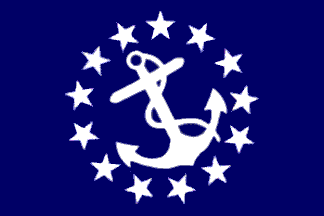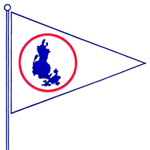
Ahoy!
Navigating women’s role in seafaring history!
September 2023
It’s not a surprise that one of the oldest and most well-known superstitions in seafaring history is that it was believed that having a woman on board a ship was bad luck. One of the biggest reasons was the belief that woman would distract sailors from their duties by arousing men’s uncontrollable passions. I mean, argh matey! This idea plays into both misogynistic views of women and hyper-masculine views of seafaring as a man’s domain.
Another deterrent to women being on board was fear of jealousy between crew members if a woman fancied one man over another, as control of the crew was important. The superstitious believed that a distracted crew would anger the ocean and cause bad weather or some other misfortune or form of revenge from the sea gods. In the early days of maritime travels, sailors would attribute any strange sounds heard at sea to sirens, mythical creatures that are half-woman and half-bird. Those fabled sirens would lure sailors to their deaths by singing sweet songs, drawing them into treacherous waters and rocky shores. And let’s not forget the other feminine nemesis of sailors, the mermaid. Mariners also blamed these half-woman and half-fish creatures for any strange sea noises accusing them of deception and for any bad luck that befell the male voyagers.
Ironically, mariners of old believed naked women calmed the sea rather than agitate it, which is the reason that many ship figureheads depict bare breasts. The watchful eyes of the female figureheads were also believed to guide the ship to safety. Vessels were also referred to as “she,” because the ship acted as a protective mother that sheltered the sailors from an angry sea.
Even pirates did not welcome women aboard. But women disguised themselves and sailed under pirate flags even at the risk of death.
They had to master all seamanship skills and get used to the rugged and treacherous life aboard a pirate ship. It is easy to imagine that women didn’t get a role in this briny opera. However, women have always been there, scribbling their own lines in the margins of maritime history.
Defying what culture or their society said was ladylike, they stepped onto leaky boats for love, loot, and the simple longing for a life less ordinary. Sometimes they did it dressed in drag; sometimes they commandeered ships under the pretense of matrimony, and sometimes they were just the apple of the captain’s eye. Against a backdrop of stormy seas and towering sails, women dared to write their own odysseys – tales that whisper through inked diaries, hushingly written letters stamped with sealing wax, and breathed through the faint echoes of sailor’s songs. They were the heroines of their time, daring the unspeakable, the unthinkable.
Lagertha (or Ladgerda) was a Viking shield-maiden who in the 9th century AD in what is now Norway, came to King Ragnar Lothbrok’s aid in a battle he was losing. She arrived on the scene with 120 ships, playing a decisive role in his victory.
Jeanne de Clisson was a French noblewoman, also known as the Lioness of Brittany, who became a pirate to avenge her husband who was executed by the French King for treason. She sold her property and raised a fleet of three warships, painted black with red sails. She and her pirates attacked French merchant ships in the English Channel, always leaving a witness alive from the captured ship to deliver a message to the King.
Sayyida al-Hurra, meaning “noble lady who is free and independent”, was the queen of Teuton in northern Morocco. She lived a life adventure and romance. She also played a significant role in the effort to unify Morocco against Spain and Portugal by partnering with Oruc Reis of Barbary Coast fame, also known as Red Beard. His fleet ferried refugees from Spain to Africa as the persecution of religious minorities on the Iberian Peninsula intensified. Sayyida took the western half of the Mediterranean Sea in the partnership and terrorized Spanish and Portuguese ships. In addition to defending her homeland, she received retribution for her family’s exile and became enormously wealthy from booty and ransom for prisoners.
Who remembers the story of Mary Read and Anne Bonny? Mary was born to the widow of a sea captain who had perished at sea. When her older brother died, Mary’s mother began dressing her up a a boy in order to continue to get support from her in-laws. Growing up as a boy, Mary enjoyed it so much that she joined the British military as a man. She later married a Flemish soldier but he died and left her penniless. Once again, she disguised herself as a man and was recruited onto a ship bound for the Caribbean. After pirates ambushed the ship, Mary joined them and fell in love with one of the pirates, who turned out to be another woman in disguise, Anne Bony. Mary and Anne, together with Captain Jack Rackham, an English pirate captain in the Caribbean, continued to loot and destroy. However, in 1720 they were all captured. Mary and Anne managed to delay their hanging by claiming to be pregnant, but Mary fell ill and died in prison. Anne’s wealthy father bailed her out, she changed her name, and later got married and had eight children.
Zheng Yi Sao, however, may have been the most successful female pirate in history. Sao, also known as Ching Shih, was born into humble circumstances. At the age of 26, she married Zheng Yi, commander of the Red Fleet. After his death, the 32-year-old Ching Shih controlled the largest pirate fleet in history – an army of 1,200 men and a crew of 70,000 that dominated the South China Sea. She was notorious for handing out harsh punishments for disobedience, and she implemented strict rules that women of raided villages must not be harmed. She made rape punishable by death. She was ultimately pardoned by the emperor, remarried and ran a gambling house.
No history of seafaring can overlook Mary Lacy. She was a British sailor, shipwright and memoirist who was the first woman to pass an exam and to receive a pension from the British Admiralty. At the age of 19 she ran away from home disguised as a boy and boarded the ship Sandwich, adopting the name William Chandler. The navy was engaged in the Seven Years War at the time and didn’t ask many questions so she went unnoticed. After suffering many hardships, in 1760 she ended up in the hospital with rheumatic fever, where she remained until the war ended in 1763. After discharge from the navy, she obtained a position as a ship’s laborer in the Chatham dockyard. She later passed exams to become a shipwright in 1790 and a year later applied to the Admiralty for a pension under her real name of Mary Lacy, which the navy granted.
Moving into contemporary history, there’s the tale of Eliza Thorrold, a widow bound not by social convention but by the responsibility for five young children and a tugboat. When her husband died from blood poisoning in 1893, she continued to operate his 44-foot steam tug in the San Francisco Bay. Her actions echoed through the piers and downed out the chatter of naysayers, sweeping her into the halls of maritime history when, in 1897, she became the first female licensed tugboat master in the Bay.
Nancy Wagner grew up in a seafaring family without female role models in the field. In 1974, she seized the opportunity to join the first class of women at the federal maritime academy in Kings Point, NY. She made headlines on her first day and again when she graduated. Despite facing gender-based challenges as a deck officer on tankers, she persisted and earned her master’s license in 1985. Wagner became the first female ship pilot in the U.S. in 1990, breaking new ground for women in maritime.
Krystyna Chojnowska-Liskiewicz set sail solo from the Canary Islands in March, 1976, to become the first woman to sail solo around the world. In April, 1978, she returned after covering 31,166 nautical miles in 401 days. She only narrowly beat New Zealander Naomi James who completed her own single-handed circumnavigation on June 8, 1978.
Not just confined to the open sea, women recast their identities in the molten metal of wartime history, turning wheels and hammering rivets. There are more recent trailblazers like Sue Milligan with her rock cod expeditions, and Jan Tiura with her decades of navigating unforgiving tugs after becoming tugboat captain in San Francisco Bay in 1980.
There was a time when a woman at sea was would have been a ghost story, a myth, or a sailor’s delusion. Not anymore. I could keep going with other accounts as the list of women making their mark on maritime history grows. Each wave crested has been a shattered stereotype; every nautical mile crossed, a boundary erased. They don’t just navigate oceans, they navigate the evolution of women’s roles in society.
Club business:
We have a candidate for Rear Commodore position! Suzi Jennings has answered our call and has volunteered to become a candidate to fill this critical role for our club next year! Thank you, Suzi!
The election of board members is held at our November membership dinner meeting. Please keep in mind that we always need and welcome volunteers to come forward and become nominees.
Put these on your calendar today:
– September 21, LIYC membership dinner meeting and BINGO! (with prizes) at the Islander. 5pm Happy Hour followed by dinner at 6pm. Menu: fish and chips, deluxe cheddar cheese burger, asian chicken salad
– October 19, LIYC dinner meeting at the Islander. 5pm Happy Hour followed by dinner at 6pm. Presenter: Page Read from IOSA
– October 28, Halloween Party (details to follow)
– November 16, LIYC membership dinner meeting and Toys Ahoy Toy Drive Kickoff
– December 9, Christmas Party (details to follow)
Finally, yesterday’s Lopez Cup was won by Shillelagh from Friday Harbor.
May our waters continue to call us together, year after year, as we celebrate the bonds we’ve formed and the memories we’ve made. A toast to all of you brave LIYC seafarers!
Everyone keep ship-shape! I’ll meet you here again at Commodore’s Corner next month! Commodore Jan


 Lopez Island Yacht Club ● P O Box 22 ● Lopez Island, WA 98261.
Lopez Island Yacht Club ● P O Box 22 ● Lopez Island, WA 98261.
Great CC Jan!